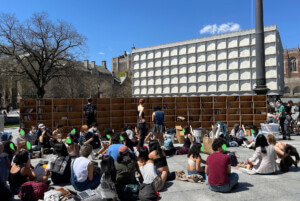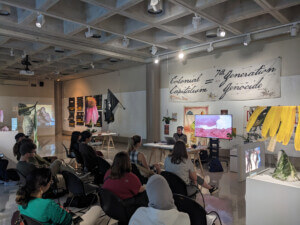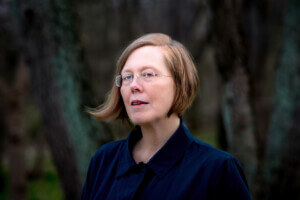It’s the start of the 2023–24 academic year, so that means a new crop of leaders are beginning the semester. To check in, AN spoke with a set of leading educators about their roles. Each answered a septet of questions; the fifth in this series is Mason White, Director of Master of Urban Design and Post-Professional programs, University of Toronto, Daniels Faculty of Architecture, Landscape, and Design.
What are your goals and ambitions for your new role?
First, it is to listen. So many new challenges and ideas reveal themselves when we listen to students and colleagues. Second, given how international our students are, I hope to create a welcoming global environment that fosters students learning from each other. What an incredible opportunity it is for students to bring with them their lived and educational experiences here and share it, rather than leave it behind.
Who is someone who has inspired your work and leadership? Why are they inspirational?
There have been so many that have inspired me, many indirectly and some directly. John Hejduk and Lina Bo Bardi indirectly, Charles Waldheim and David Gissen directly. But I would say Keller Easterling has probably been the most influential on me through her intellectual curiosity and trans-disciplinary provocations in architecture and urbanism. Her singular ability to ask difficult questions about the position of design in the world is an enduring inspiration for my work and teaching.
What are the most urgent topics and challenges for architectural education today?
There are so many urgent issues, and this can be quite overwhelming to students and teachers. But I think social and environmental equity in pedagogy, education, and the profession is the defining urgent matter of our time. Recognizing that social and environmental matters are intimately intertwined is crucial to a more inclusive and responsible design education. And within these common goals, we must continue to be deeply curious about what design can do and remain unafraid to ask questions about what the discipline is not doing.
How has the COVID-19 pandemic changed your thinking about being a leader in higher education, if it has?
We seem to still be recovering from the isolation of the pandemic in terms of access to and engagement with design education. We are re-learning how to collaborate and share knowledge, and re-asserting the importance of live discussions and healthy debate. I am trying to wean the culture of design education away from a consumption-based pedagogy mindset, often encouraged by asynchronous learning. A true design education requires direct participation and engagement with each other; it cannot be passively consumed.
How should the topic of sustainability be incorporated into architectural education?
Sustainability should not be a topic to be incorporated or applied like a flavor. It should not be a course unto itself or a lecture in a course or an assignment within a studio. It should be embedded within all aspects of design education. But, how do we get there? We get there by seeing it is an act of design thinking with broader environmental and social ethics across scales, not just applied metrics. We also can get there by greater specificity in situating approaches such as carbon neutrality and embodied energy. Current and future designers need to see these as intertwined and part of a more complete design approach.
How should the goals of diversity and inclusivity be advanced under your leadership?
The Master of Urban Design and Post-Professional program at University of Toronto has the benefit of being predominantly international students. It’s a truly incredible mix that the entire school is so fortunate to have. Rather than seeing the program as instilling Canada into the students, this is a chance to instill these global perspectives into the school, and the city beyond. Making space in the classroom for students’ “lived experience,” as bell hooks calls it, expands critical design pedagogy back out into the world.
What are you optimistic about as you create the future of architecture and architectural education?
So many exciting things are unfolding in real time and show promise for an even greater future in design education. I am most excited about new models of practice, and how education can create space to expand not only what issues design can address, but equally importantly, how we address them. Experiments in methods and modes of practice are creating powerful, non-hierarchical forms of collaboration and design tools, as well as exciting new ways for designers to work with communities, nature, and technology.











